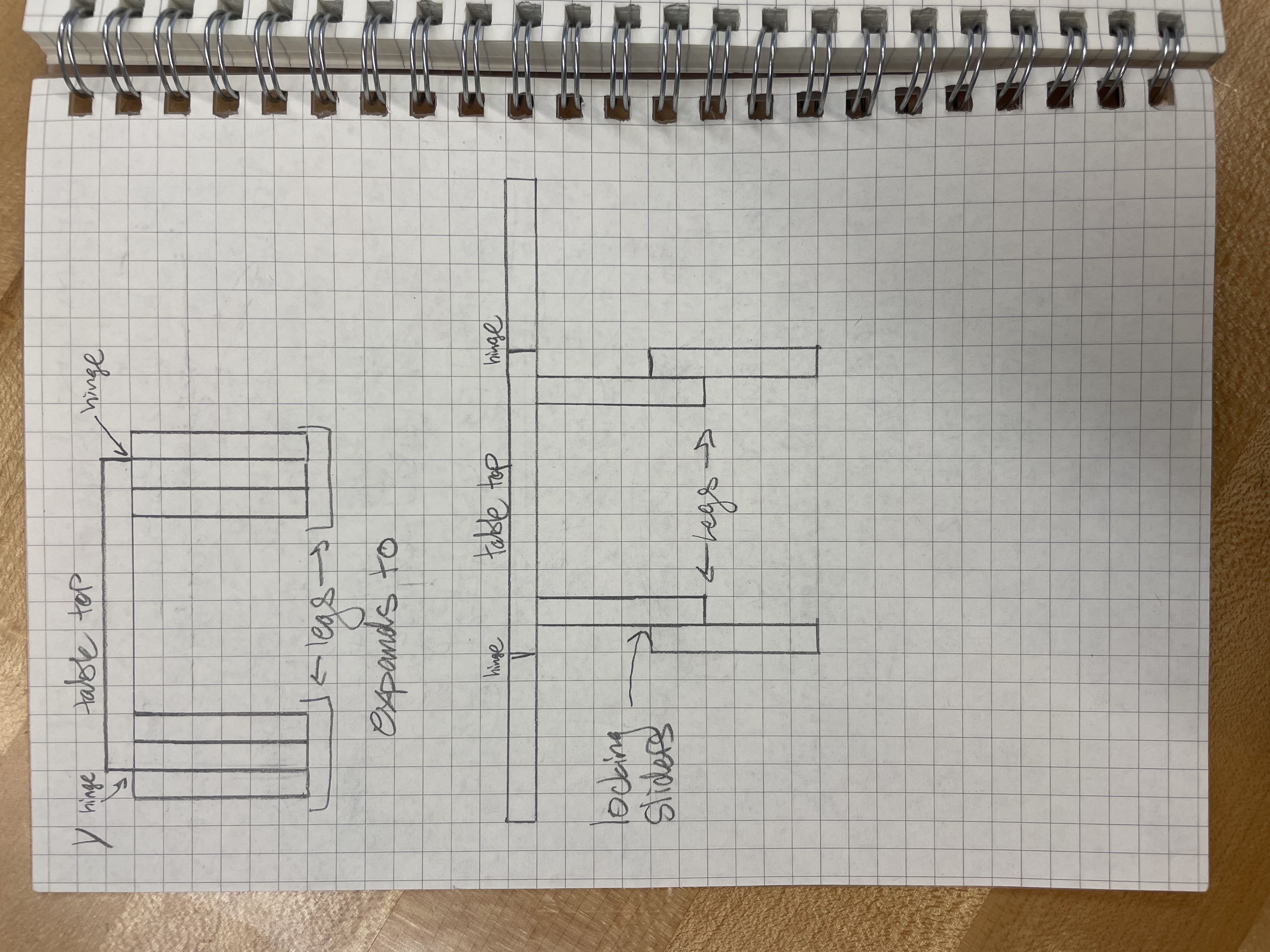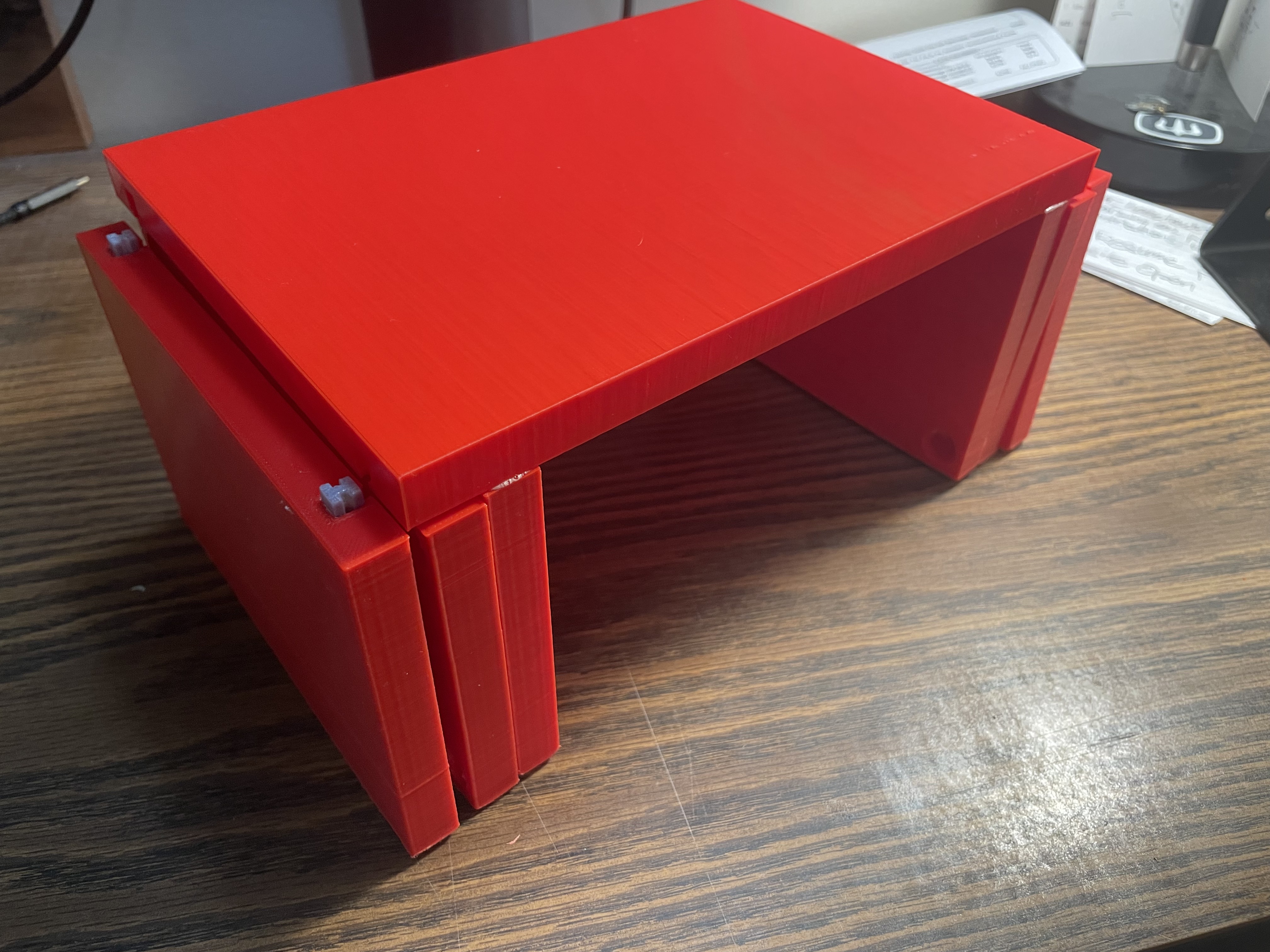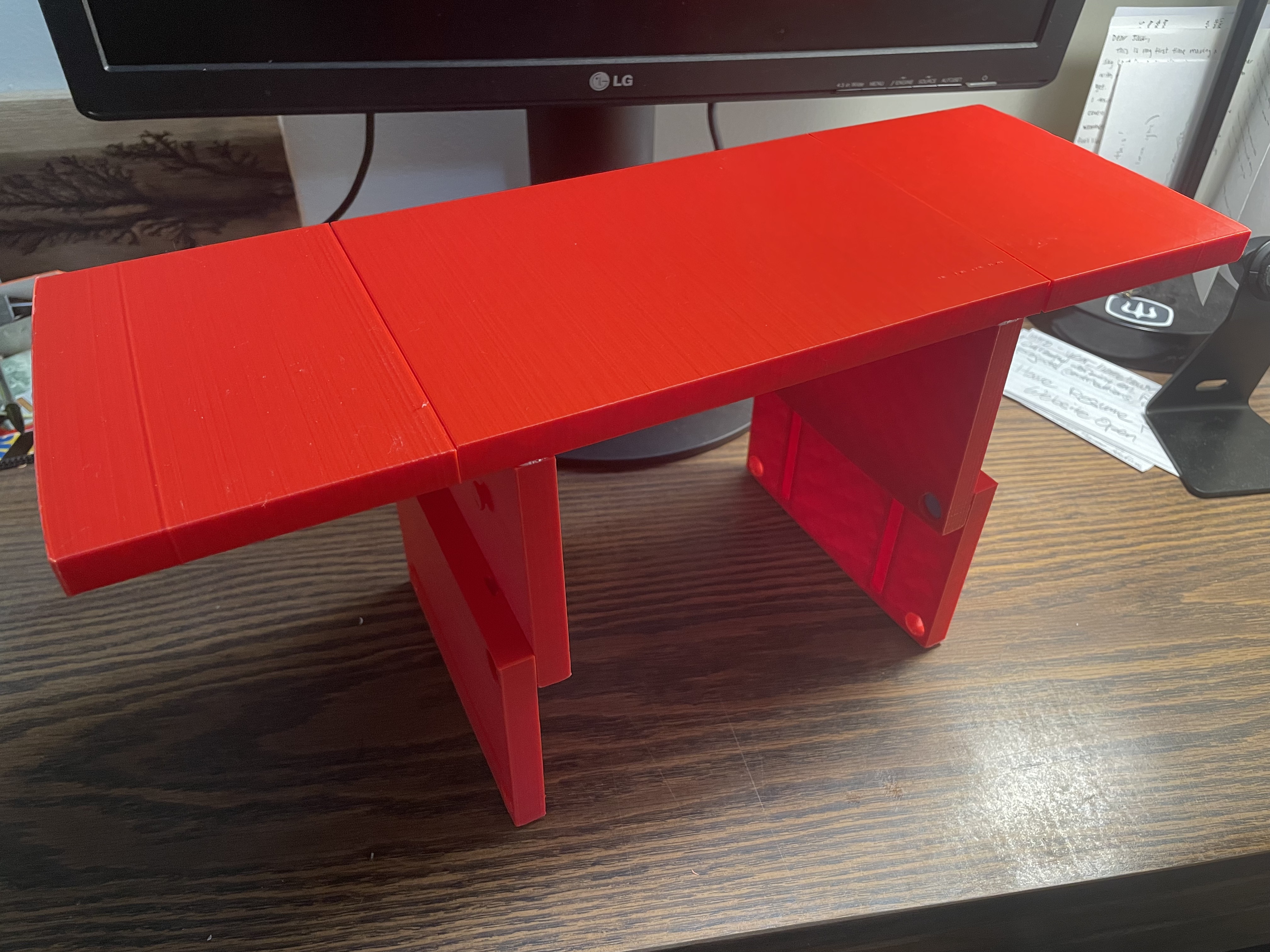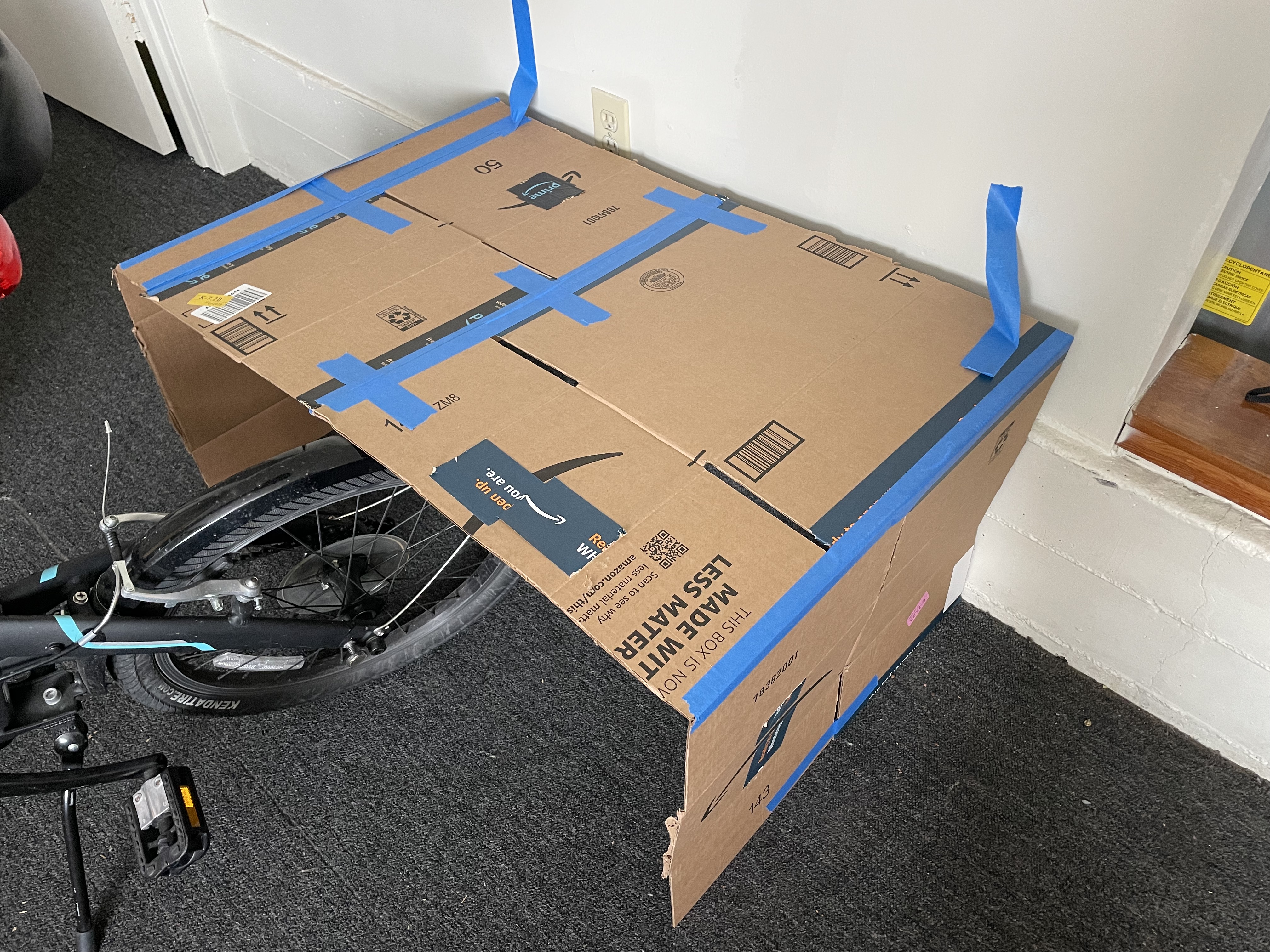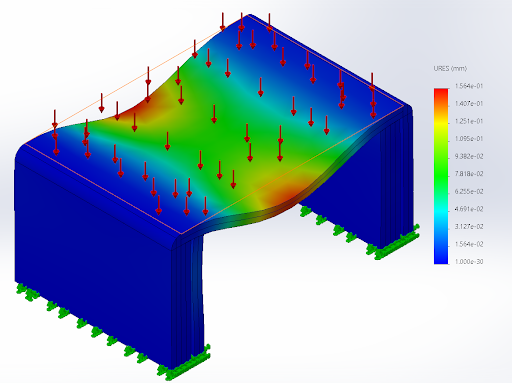Expanding Coffee Table
This was a project for a mechanical engineering product design class at Berkeley. My team elected to design and prototype a coffee table that could expand into a full-sized dining table. Over the course of a semester, we designed, analyzed, iterated, prototyped, built, and presented our table.
Background
Our goal was to create a functional prototype for a table with the capacity to become both a coffee table and a full-sized dining table, primarily targeting college students and city-dwelling consumers living in small apartments. We emphasized ease of transport, ease of use, style, and affordability. We performed market research, learning that the average American under 40 will move 8 times in their life, the average living space per capita in cities is 292 sq ft, and the global small space furniture market is expected to grow 6% year over year. We observed our competitors in the space, noting that existing products were either impractical, flimsy and cheap, or too expensive for our target customers. Because of this research, we decided to focus on the following features in this order: usability (ease of use, ability to expand/contract), cost for consumer, style (desirable visual appearance), ease of assembly, and transportability. Our team made a business model canvas to determine key partners, activities, and resources, as well as customer relationships and advertisement channels.
Design
As a team, we conducted market research by interviewing college students and decided on the following specifications to design off of: the weight had to be 50lbs or less, the optimal dimensions of the coffee table were 15x36x24in, with the full expanded height being 28-30in, the cost to consumer had to be $100-200, the minimum load capability should be 250lbs, and the transition time between coffee and dining table needed to be under 5 minutes. We brainstormed over 50 potential designs then used a concept selection matrix to narrow it down to two. We then combined the best aspects of these designs and had a starting point. I completed several iterations of CAD using Solidworks, creating a table that utilized sliding rails to raise the legs of the table, increasing the height. The coffee table legs were three pieces, with two sliding across each other to expand vertically and one rotating out to extend the length of the table. The legs were held in the extended position by pins and the arms were supported by internal beams, which could easily be positioned from the outside in one smooth motion. For aesthetic purposes, rounded pieces were added in the corners, hiding the necessary cutout. After designing, we used Solidworks simulations to conduct FEA, testing how much weight the table would be able to hold in both configurations. After successful results, we moved to prototyping.
Prototyping
To prototype this table, I first 3D printed all of the parts at 1/4 scale. This method of rapid prototyping both minimized the time needed to finish a prototype and cut down on the cost. I used FDM printing for the large components and SLA for the more precise pieces. I also had to calculate the different tolerances required for the 3D printed parts. After printing and assembling the table, all functions were working as designed, so the second prototype was started. This was a full-size plywood prototype, with aluminum extrusion beams and aluminum pins. Plywood was chosen due to its low cost, as this prototype was self-funded. MDF would have been the preferred choice. Plywood was cut using a CNC mill, and two layers of 0.75” plywood were layered together after milling to create the internal components. This prototype had many flaws, but it was functional and a good demonstration of the concept and the design. We presented this prototype and received a high grade on the project.
Reflection
This project was a great experience for product design and CNC milling. The project took me through the background of coming up with a product and all of the analysis that happens before anything is designed, such as market research. There was also a large amount of problem solving that this project allowed me to perform. During manufacturing of the prototype we had a finite amount of plywood to work with and when pieces were improperly cut or not lining up correctly, I had to come up with solutions quickly. A few small redesigns were required to aid the final prototype in coming together, but in the end, we were successful in finishing the prototype on time. There is obvious room for improvement in this product, but the project overall was a success.
